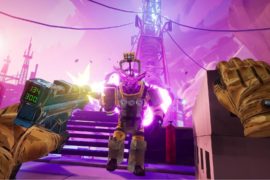Pixel Ripped 1978 is the third entry in the Pixel Ripped series and a nostalgia fueled game-within-a-game VR adventure that, through a collaboration with Atari, takes gamers back in time to experience a sense of what it might have been like during the earliest days of the games industry. How does it hold up? Read on for our full review.
In Pixel Ripped 1978 you play as Dot, the protagonist of the previous two games and a virtual character that lives in the game world. You also play as Bug, the creator of the game in which Dot lives. The main villain, Cyblin Lord, has gone back in time to specific moments in Bug’s life, changing the past so that she is no longer inspired to create Dot’s happy game world.
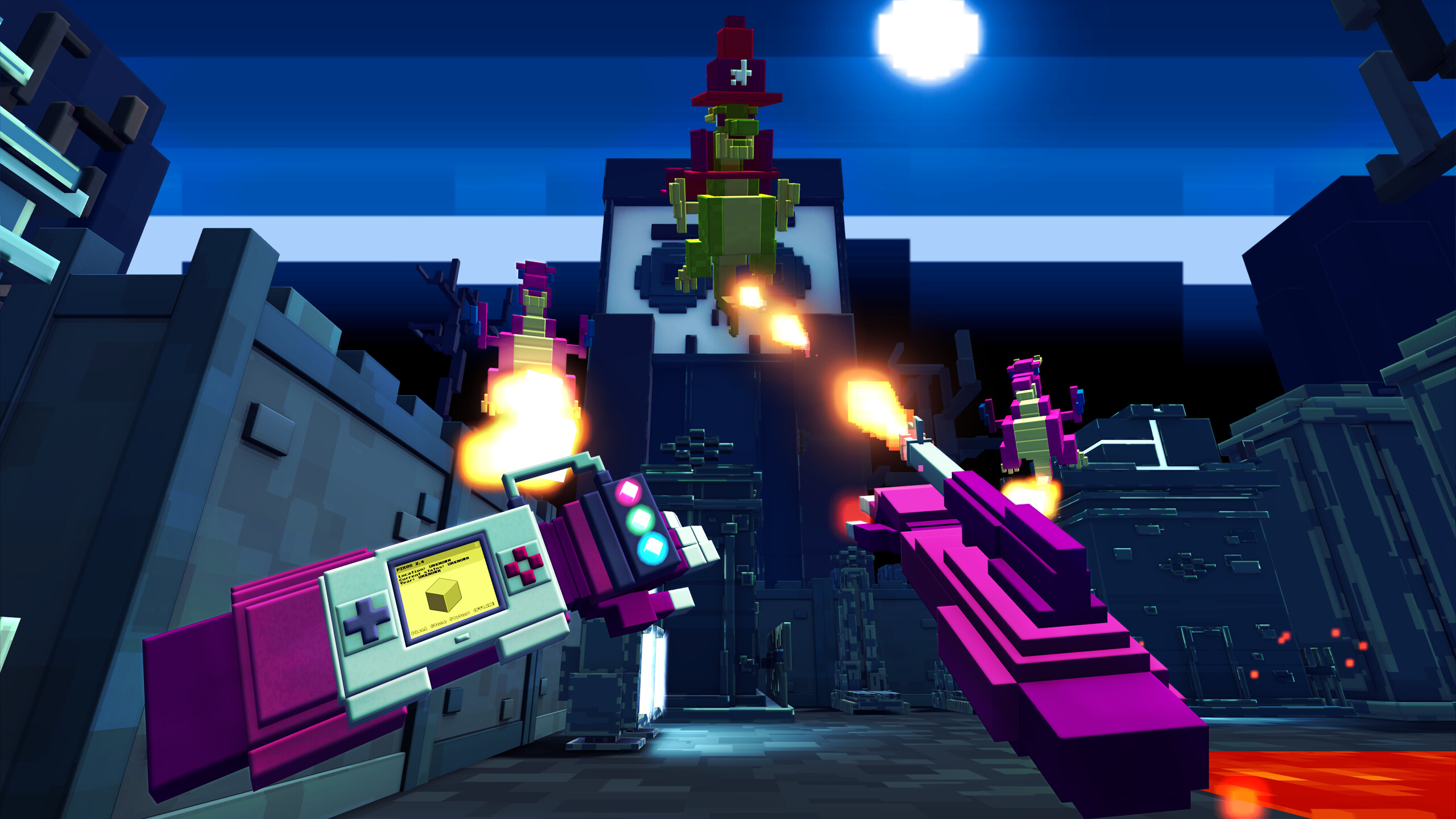
Instead, he seeks to create an evil and sinister new game centered around Cyblin Lord himself. Dot must travel to three classic Atari games to unlock new abilities, regain Bug’s creative powers and defeat this villain. In the real world of Atari’s offices, Bug must play classic Atari games, interact with her coworkers, bug test prototypes to unlock new abilities for Dot, and help her win the day.
Nostalgia-Fueled Adventure
This game was my first experience with the Pixel Ripped series and I wasn’t even alive in 1978. I’ve also only played more modernized versions of the game worlds Dot travels to in this title. Even without a nostalgic anchor and the lack of personal history with the series, I found a lot to love in Pixel Ripped 1978.
Pixel Ripped 1978 immediately caught my eye with its impressive visual style. ARVORE created two distinct environments in Dot’s funky 3D pixel art world that you explore in first person and the “real” world where Bug sits behind her desk developing and playing classic games. The meticulously designed environments and characters of the game world evoke the pixelated charm of the early years of gaming, while the stylized Atari offices sections reminded me a little of the Psychonauts series from Double Fine. The attention to detail in both worlds was impressive, with things like parody posters for popular movies in the office as well as fun 3D pixel art animal characters in the game world.
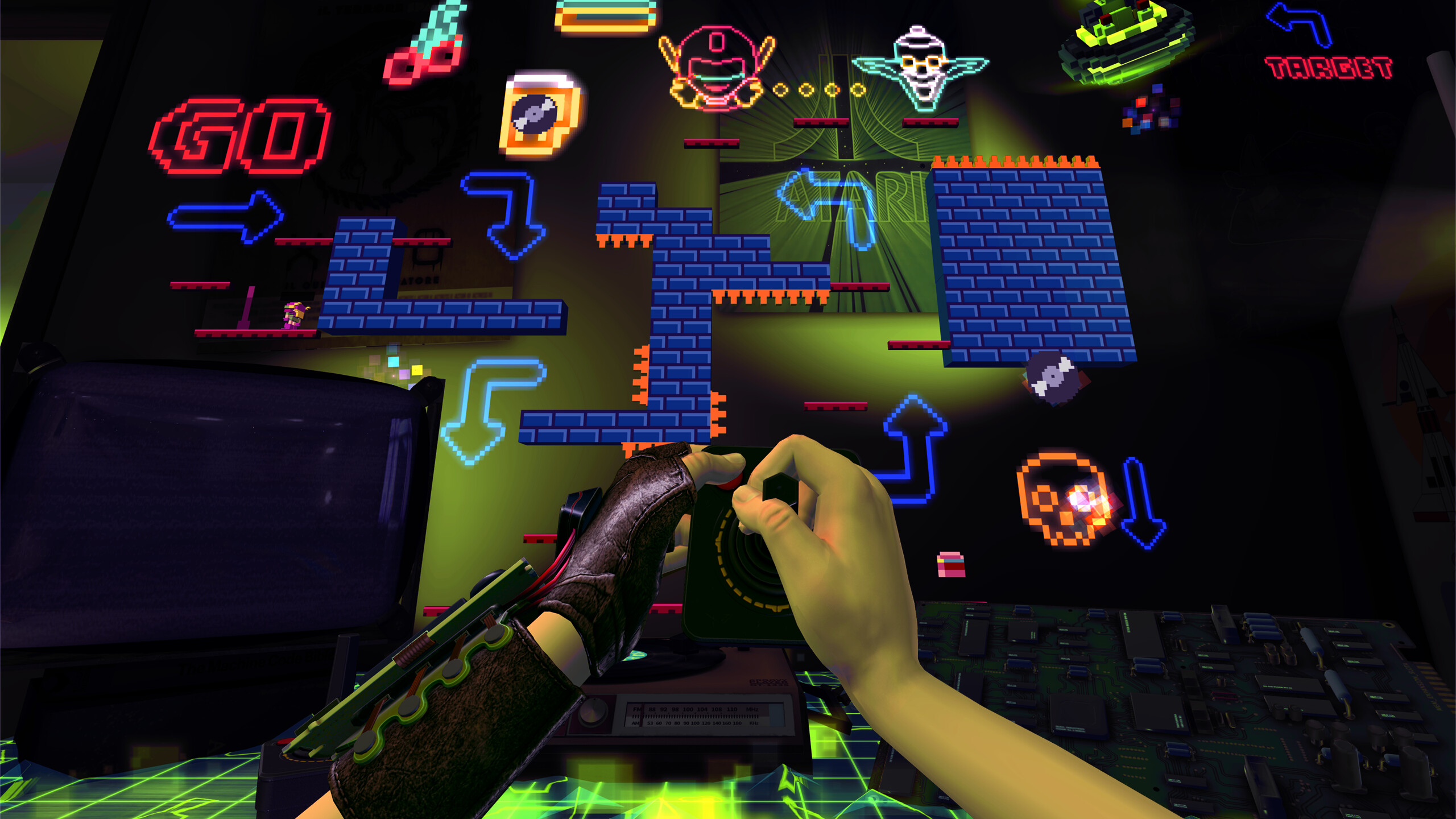
Progressing through both worlds is straightforward. You often get stuck in one place and have to enter the game to unlock something, or vice versa. At one point I got a disk that unlocked the ability to dance during a section of the game, but I also had to remove it to be able to shoot. This meant I had to constantly take my hand off the controller and insert, then remove, the disk. The novelty didn’t wear off even though you do this a lot and, overall, the game-within-a-game style adventure worked exceptionally well.
Combat, Movement, and Immersion
Some of Pixel Ripped 1978’s gameplay didn’t really work for me. Specifically, the combat in Dot’s game world was a real struggle. I usually opt for teleporting movement over continuous artificial locomotion for longer game experiences but here I found even some of the simpler combat encounters in Dot’s world unworkable with teleporting movement. Whenever I was rushed by a melee enemy I couldn’t teleport and reorient myself quick enough to damage them before they got to me. I ended up switching to smooth locomotion for the combat sections and switching back after. This got very uncomfortable if there were several combat sections in a row. Of course, your experience could be quite different if your movement preferences and comfort tolerances are different.
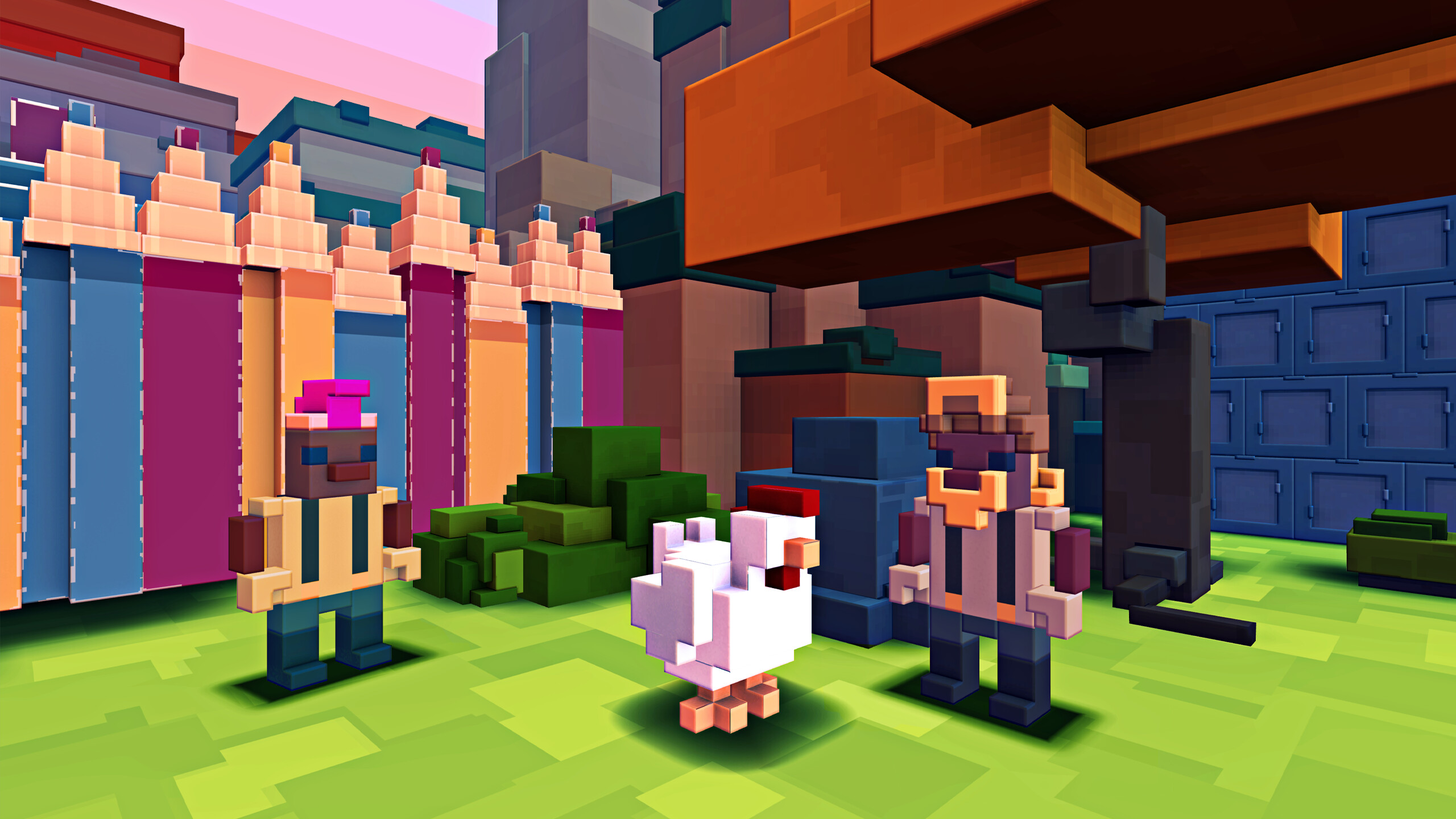
Beyond this, though, I also didn’t find the combat particularly engaging. If an enemy fires a projectile at you it’s elementary to just shoot it out of the air in between shots at these enemies, and all of the enemies in the game took way too many shots to kill. The lack of meaningful upgrades or significant changes to combat mechanics further dampens the gameplay experience. Players may find themselves stuck in lengthy battles with enemies that take too long to defeat. For some, this repetitive and sometimes monotonous combat loop may overshadow the game’s overall appeal. There are new abilities acquired in each game, but the combat applications for these are limited.
Still, the game-within-a-game concept remains a stroke of genius. Players controlling Bug behind her desk at the Atari offices while simultaneously playing a retro game on her Atari effectively captures the nostalgia of retro gaming and provides an engaging twist to the VR experience. You have to split your attention between the virtual gaming world and the challenges of the office world. It’s during these office sections that Pixel Ripped 1978 truly shines and showcases its immersive potential. At one point I was playing through an office party and coworkers kept coming in to get me to drink a beer with them. I frequently got so absorbed in feeling like the office was my reality that, when people walked by in game, it made me jump.
Boss Key
The game-within-a-game concept where players embody Bug behind her desk while simultaneously playing a retro title remains a stroke of genius. It effectively captures the nostalgia of retro gaming and provides an interesting twist to the VR experience. You really have to split your attention between the virtual gaming world and real-world challenges.
The office sections are where Pixel Ripped 1978 truly shines and showcases its immersive potential. One segment sees you at an office party and coworkers keep coming in to get me to drink a beer with them. I frequently got so absorbed in feeling like the office was my reality, making me jump when people walked by in-game.
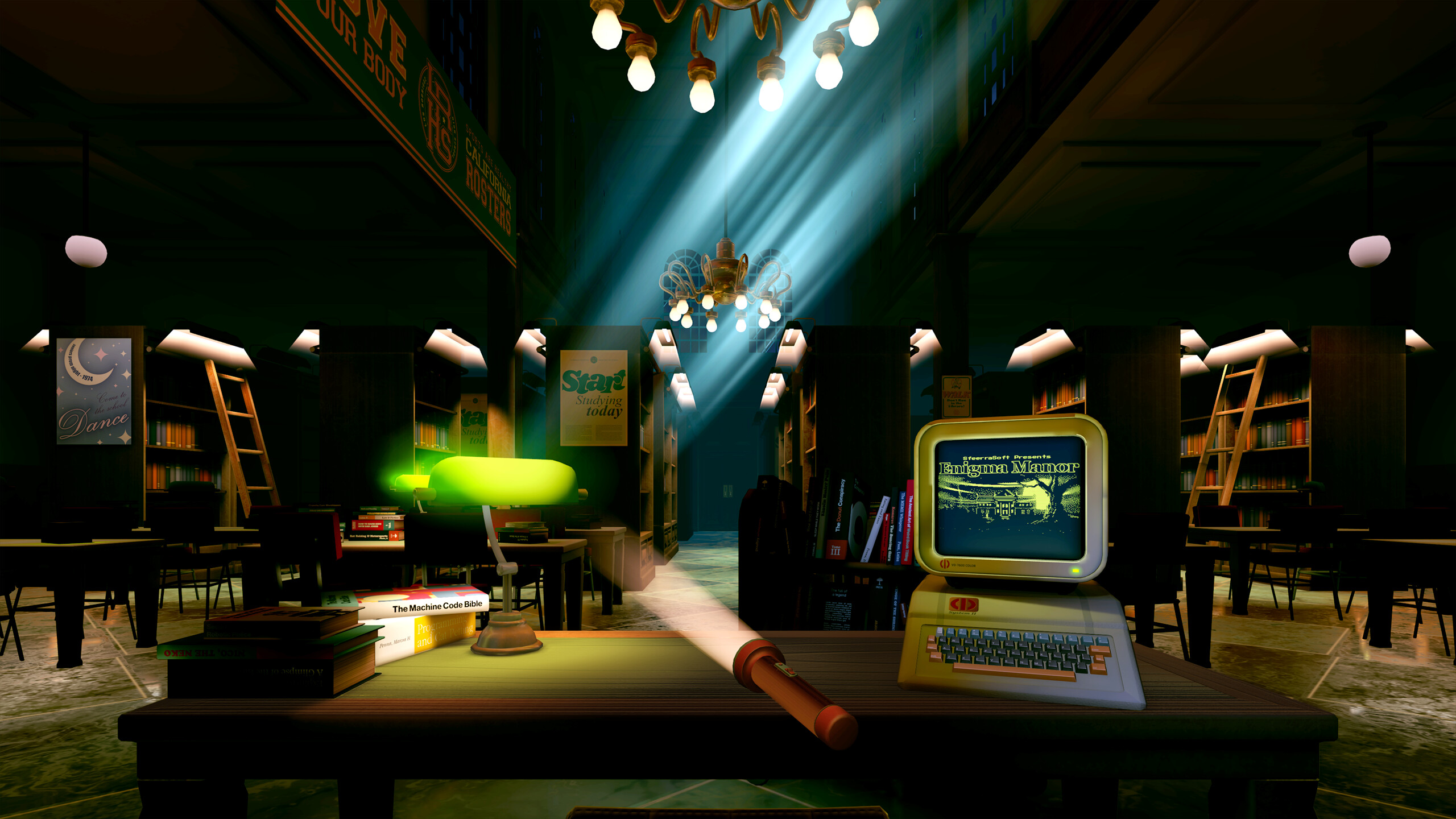
My personal highlight is the boss fights. In these, you get transported back in time to a significant event in Bug’s life where she replays a classic Atari game like Breakout. Beating a level sees both worlds merge, overlaying the 3D pixel art style of Dot’s world on the memory as Bug and Dot fight off Cyblin Lord together, which takes place in a remixed version of the Atari classics.
Even if you struggle with combat like me, I recommend pushing through to see these as the implementation is very enjoyable. One great boss battle involves Dot beating a platforming challenge when Cyblin Lord summoned enemies that flew around Bug. I had to take a hand off the Atari controller so I could swat them out of the air to protect Dot. While what the game wants you to do in these fights wasn’t always clear, particularly the Breakout fight, I never stopped enjoying them. Figuring out the puzzle of the fight was a big part of the fun for me.
Pixel Ripped 1978 Review – Final Thoughts
Pixel Ripped 1978’s light-hearted and humorous story kept me invested in Bug and Dot’s stories, and I was consistently impressed with the game’s environments. The integration of the office world and the virtual gaming world within the story was really well done, with several fun jokes and interactions in the office world that I laughed at. Your boss is particularly entertaining as a real sleazy 70s business dude.
I’d love to see some fine-tuning to the combat to more effectively play using the teleport movement for those less comfortable with smooth locomotion, and it could use some more upgrades and combat abilities. Building from here, future games in this series could become VR classics. It’s a real achievement that Pixel Ripped 1978 was able to make me nostalgic for an era of gaming that I never really experienced first-hand, and I would love to see the Pixel Ripped take on some of my childhood favorites.
Despite my issues, overall Pixel Ripped 1978 remains a worthwhile addition to your library, especially for those seeking a dose of retro gaming nostalgia.

UploadVR focuses on a label system for reviews, rather than a numeric score. Our reviews fall into one of four categories: Essential, Recommended, Avoid and reviews that we leave unlabeled. You can read more about our review guidelines here.


